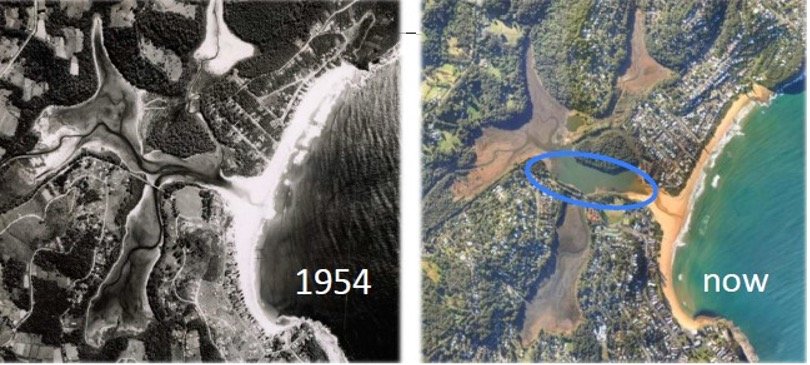Avoca Lagoon - Update on Water Quality
Avoca Lagoon – Serious Environmental Stress
Avoca Lagoon is a precious jewel – providing wonderful benefits for recreation, sporting activities, and wildlife.
But State-wide environmental monitoring demonstrates year-after-year that Avoca Lagoon water quality (measured by turbidity) is typically poor – among the worst in NSW. Why this is the case has not been understood fully by scientists and Council managers.
Additionally, the State-wide Beachwatch program measuring suitability for swimming (presence of faecal microorganisms) every year assigns a Poor grading for the Lagoon water.
New scientific studies shed important light on the causes. There are several key parts to the problems, indicating the need for a comprehensive strategy to restore the Lagoon.
New Study Results – Nutrients and Turbidity
Scientists from the State Environment Department recently carried out a one year-long investigation of the condition of the Lagoon water. A wide range of measurements and assessments were performed in the Lagoon, both when the sand berm at the ocean is closed and open, and in the five main tributary streams
Members of a community reference group received a briefing in April; and the State scientists should deliver a full technical report shortly.
The Main Basin
Pre-&Post- Sand mining showing extent of dredge hole
Historically, the whole bed of the Lagoon sat about 1 metre above sea level. When the sand berm was open there was full flushing of the water and bottom sediment.
But sand mining was permitted for a decade or so until 1994 – removing about half a million tonnes. This produced a large dredge hole in the Main Basin, affecting about 30% of the Lagoon bed area and lowering the floor there by up to almost 4 metres, dropping that part of the Lagoon below sea level.
This hole is a trap for organic material. And it is not flushed when the Lagoon is open to the sea. These organic sediments release large amounts of nutrients into the water which feeds abnormal levels of algae growth.
The result is: excessive turbidity blocking penetration of sunlight; and dissolved oxygen in the bottom water layer in the hole is extremely low, unable to support fish and other life dependent on oxygen.
The South Arm – The Bridge to old Bowtells caravan park
The two creeks flowing into the top of the south arm (passing under The Round Drive) are the largest sources of nutrients and suspended particulates from the catchment. The bridge at the other end constricts water flows between the south arm and the main basin.
This causes sediment to become trapped in the south arm. And when wind drives wave activity in shallow water, fine particles become suspended causing turbidity.
Faecal Pollution
A 2020 study by the University of Technology Sydney examined levels and origins of faecal pollution.
The findings confirmed the Beachwatch results. Avoca Lagoon exhibited high to very high levels of faecal organisms following rainfall events. It concluded that sewage was the main source. Dog and bird faecal contamination were also significant.
Council has commissioned inspection of the sewer network in Avoca Beach to determine where the mains are in poor condition and to undertake relining– 22.3km inspected and 3.3 km relined, so far.
A sewer trunk main servicing a wider region passes under the Lagoon. A pumping station is on the northern shore near the Lagoon entrance. From time-to-time the main breaks or the pumping station overflows, causing major water pollution and triggering opening of the sand berm by Council to flush the Lagoon.
Council is commencing works to install a new sewer main under the Lagoon and upgrading the shore infrastructure.
Framing an Action Plan
Our goal - healthy water in Avoca Lagoon for the long-term
Council plans to complete a new strategy – a Coast Management Program – for the Lagoon by mid-2025. Likely, water quality data gathering will continue to provide additional insights.
Community engagement during the intervening time will be essential to frame an effective action plan to remedy the environmental problems. The Community Association will be active on that front.
(Photos courtesy State Environment Department and Central Coast Council.)


